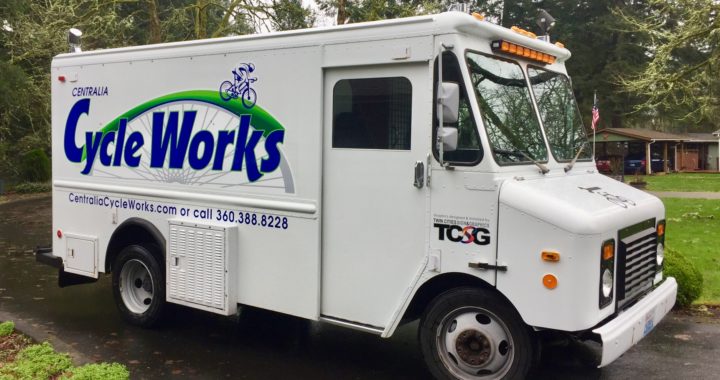It looks like we’ll make it. Today’s task is to publish prices to our list of services and parts.
We are now equipped and stocked to handle most bicycle service work. I can fix flat tires, replace chains, replace control cables and housing (brakes and shifters), replace tires, and overhaul common hubs, headsets, and bottom brackets. I stock commonly used rim brake pads.
I’d like very much to be able to claim we can do everything to service bikes. There are some areas of work that are not commonly required, though.
An example of a rare procedure is the milling and cutting work on head tubes or bottom bracket shells. This is usually done once by the frame builder when the bike was initially built, and doesn’t need to be done again. I’ve done such work though, and will get the required tools to do it if the need arises.
Another area of bicycle service we will be adding to our catalog of services is suspension work. I need a better understanding of which suspension systems are most commonly used by local riders, before we get manufacturer specific service tools and supplies I’ll need to overhaul your front fork.
I’d also like to improve our wheel repair capabilities, and by that, I mean spokes. Replacing a single broken spoke becomes difficult without having a library of hundreds of pre-cut and threaded spokes of all sizes, types, colors, and lengths to be able to replace any broken spoke. I’m convinced that the best practice here is to cut and thread a spoke from a much smaller stock of spoke blanks as someone needs one.
Finally, disk brakes. Ahh, what to do about disk brakes? There are dozens and dozens of different disk brake pads available. There are also plenty of different sizes of brake disks. Are they cable actuated, or are they hydraulic actuated? This is another area of cycling in which I have to order parts as customers need them, until I learn what is most commonly used in our local area.
Utlimately, interchangeability is going to be one of the hard problems for me to solve, I think. Not only do I have limited space to carry replacement parts, I really want to build a portfolio of service parts that will best meet the needs of riders in our area. We’ll get there, and it won’t take long to do it.
One of my primary business goals is to always improve the number of service requests that I can complete on the first visit.

